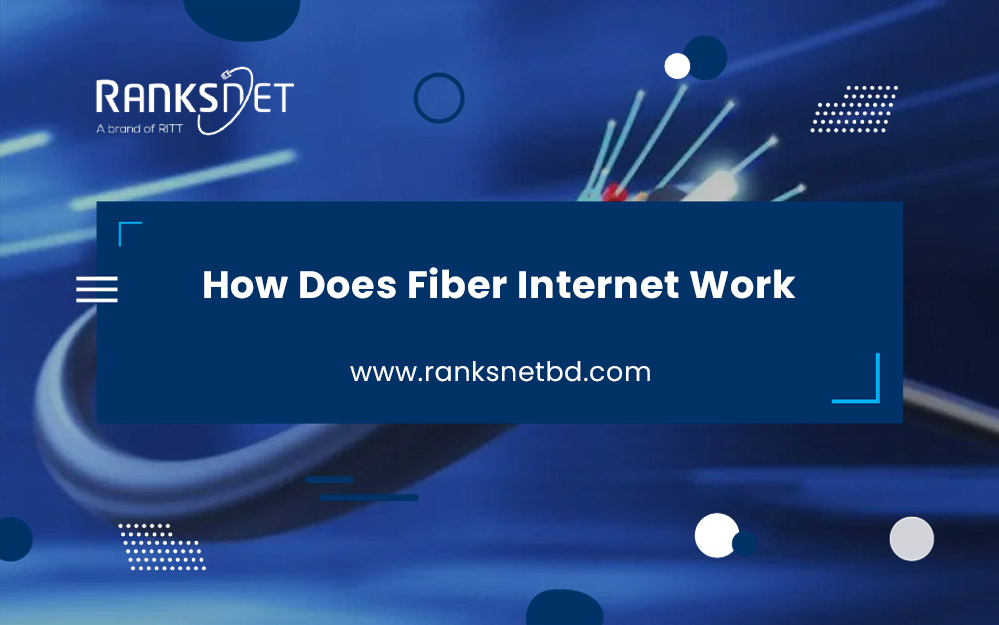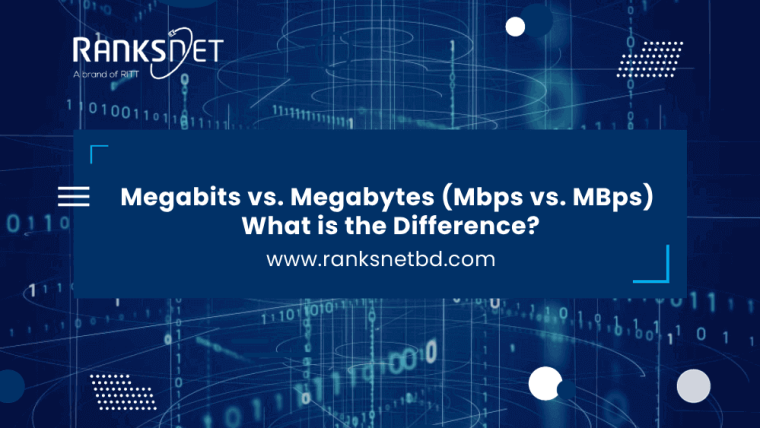Isn’t it crazy how much we rely on the internet these days?
I mean, it’s not just for browsing websites or checking our email anymore – we use it for:
- Work
- Entertainment
- & Even to control our homes
With all these demands, it’s no wonder that internet speeds have become such a big deal. And for that, we have fiber internet – the holy grail of internet speeds.
So, how does fiber internet work?
Well, we understand there is much technical jargon, and we’re here to simplify it for you.
By the end of this post, you will become fiber internet expert. So if you’re curious about this new technology and want to know what makes it so special, keep reading!
How Does Fiber Internet Work: A Closer Look at Fiber Internet Technology
Fiber internet works by sending data using light signals through thin glass or plastic fibers. These light pulses travel super fast, giving you speedy and reliable internet. It works by sending data as beams of light through fiber-optic cables, providing faster and more reliable internet connections.
Let’s learn everything from the science behind fiber optic cables to how data is transmitted, so you can better understand what makes fiber internet so special.
What is Fiber Optic Internet?
Fiber optic internet is a type of internet connection that uses fiber optic cables to transmit data at high speeds. The technology relies on light signals to carry data over long distances, providing faster and more consistent internet connectivity compared to traditional copper-based connections.
Now, what makes fiber internet or fiber optic cable internet different from traditional internet connections?
This is how fiber internet uses thin strands of glass or plastic fibers to transmit data using light instead of copper wires or coaxial cables. This allows lightning-fast speeds and a more stable connection, even over long distances.
So if you love to binge-watch your favorite shows, play online games, or use cloud computing services, consider changing your cable to fiber internet.
Know about two main types of fiber optic cables in the next section and get information on fiber internet cable connectivity.
What are the Different Types of Fiber Optic Cables?
So, when it comes to fiber optic cables, there are two main types:
- Single-Mode
- Multi-Mode.
Here is how they are different:
What is Single-mode Fiber Optic Cable?
Single-mode fiber optic cable uses a single strand of glass fiber to transmit data, which has a smaller diameter than multi-mode fiber.
It’s designed to transmit data over long distances, typically up to 10 kilometers or more, with very little signal loss.
This makes it a popular choice for:
- Telecommunications
- Long-distance data transmission
- & Cable television
What is Multi-mode Fiber Optic Cable?
On the other hand, multi-mode fiber optic cable has a larger diameter and uses multiple strands of glass fiber to transmit data.
Although it’s designed for shorter distance transmissions, typically up to 500 meters or less, it can transmit data faster than single-mode fiber.
Multi-mode fiber is often used in:
- Local area networks (LANs)
- Data centers
- & Video surveillance systems
Unreveal How Does Fiber Internet Work?
How fiber internet works is quite fascinating!
Fiber internet can transmit data through fiber optic cables, which are made up of these super tiny strands of glass or plastic fibers that are thinner than human hair.
The transmission of data takes place in three main steps.
1. Transmission of Data through Fiber Optic Cables
First, the data is sent through the fiber optic cables as light signals.
These light signals are created by a laser or an LED at one end of the cable, and then they travel down the cable at lightning-fast speeds.
2. Conversion of Data from Electrical Signals to Light Signals
Before the data can actually be sent down the cable, it needs to be converted from an electrical signal to a light signal.
This is where a device called a modulator comes into play.
It converts the electrical signal into a series of light pulses that can then be sent down the fiber optic cable.
3. Receiving and Processing of Data by the Receiver
Finally, once the light signals have traveled down the fiber optic cable, they reach a demodulator device.
This clever device converts the light signals back into electrical signals, which are then processed by the receiving device, such as a computer or other device connected to the fiber internet network.
What are the Benefits of Using Fiber Internet?
Fiber internet offers several advantages, making it a compelling choice for those seeking a reliable, fast, and secure internet connection.
Here are some of the key benefits of fiber internet:
1. Faster Downloads, Smoother Streaming, and Reduced Lag
One of the most significant advantages of fiber internet is its speed.
Fiber optic cables can transmit data faster than other connections, such as DSL or cable.
This means you can enjoy faster download and upload speeds, smoother streaming of videos, and reduced lag or buffering during online gaming.
2. Ensures a Consistent and Stable Connection
Another key advantage of fiber internet is its reliability.
Because fiber optic cables are more durable and less prone to damage from weather or electrical interference, you can count on a more consistent and stable internet connection with fewer disruptions or outages.
3. The Added Protection of Fiber Internet
Fiber internet is also more secure than other types of connections.
Because data is transmitted via light signals rather than electrical signals, it is much more difficult for hackers to intercept or access your sensitive information.
This added layer of security can give you greater peace of mind and help keep your online activities and personal data safe.
Explore the Disadvantages of Fiber Internet
Like with any technology, fiber internet has some drawbacks to keep in mind.
1. Unavailability in Specific Areas
Firstly, it may only be available in some areas, especially in rural or remote locations, due to the expensive and time-consuming process of laying fiber optic cables.
2. Higher Pricing
Secondly, it can be more expensive than traditional internet services because of the high cost of installation and equipment.
3. Specialized Maintenance
Lastly, fiber optic cables require specialized maintenance, which can be expensive and time-consuming, leading to longer downtime than traditional internet services if repairs are needed.
Read our article to learn about Fiber Optical Vs Cable Internet.
Why is Fiber Internet the Future of High-Speed Data Transmission?
Fiber internet is a game-changer when it comes to high-speed data transmission.
Sure, there are a few downsides to fiber internet. But the benefits it offers are worth the extra cost.
With fiber internet, you can enjoy a reliable, fast, and secure internet connection, which is great for those
- Who work remotely
- Stream a lot of movies and TV shows
- or Use the internet to control their homes
So, if you’re looking for a more reliable and faster internet connection, fiber internet is definitely worth considering.
Frequently Asked Questions
How does fiber internet compare to other types of internet?
Fiber internet is faster and more reliable than other types of internet, such as DSL or cable. This is because fiber optic cables are able to transmit data over longer distances without losing signal strength or speed, which makes them ideal for high-bandwidth applications like streaming video or gaming.
How is fiber internet installed?
Fiber internet requires a special fiber optic cable to be installed from the service provider’s network to the customer’s home or business. This typically involves digging a trench to bury the cable underground, or stringing it along utility poles. Once the cable is installed, a technician will connect it to a special modem or router that converts the fiber optic signal into usable internet service.
How does fiber internet connect to your house?
Fiber optic cable runs via an aerial or underground drop to the ‘clamshell’ that the technician installs outside your home. This clamshell houses the fiber cable that goes through the wall and connects to the optical network terminal (ONT).
What is the difference between fiber and cable Internet?
Cable internet is delivered via the same copper coaxial cables that provide your home with cable TV. Fiber requires its own fiber-optic cable infrastructure throughout a neighborhood, community, town, or municipality for an ISP to offer it as a service.
Is fiber internet available everywhere?
Fiber internet is not yet available everywhere, as it requires significant infrastructure investment to lay fiber optic cables. However, more and more service providers are expanding their fiber networks to reach more customers, particularly in urban areas where demand for high-speed internet is highest. You can check with your local service providers to see if fiber internet is available in your area.



